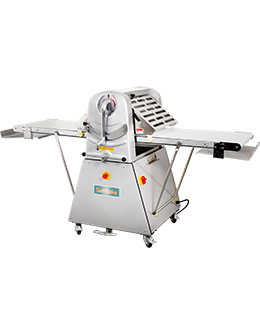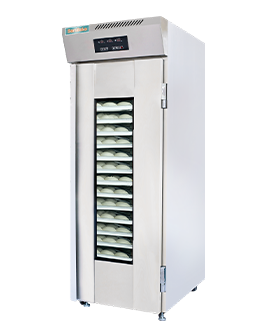Planetary Mixer for Egg
What Is a Planetary Mixer?

Definition, Basic Mechanics, and Features
How Does a Planetary Mixer Work?
Explanation of the Mixing Action and Movement
Think of a planetary mixer as a mini solar system within your kitchen. The beater (or whisk) rotates around the bowl while simultaneously spinning on its axis. This dual movement ensures that ingredients, especially delicate ones like eggs, are evenly mixed, air incorporated, and whipped to perfection. Unlike simple mixers that just spin in one direction, the planetary motion reaches every corner of the bowl, giving you a smooth, uniform mixture every time.
Why Use a Planetary Mixer for Eggs?
Benefits Over Manual Whisking or Traditional Mixers
- Consistency: Achieve perfectly blended eggs every time.
- Speed: Save time and effort, especially when preparing large batches.
- Versatility: Use it for beating eggs, whipping egg whites, or making batter.
- Air Incorporation: Whipping eggs with a planetary mixer introduces more air, making your dishes lighter and fluffier.
Achieving Perfect Egg Mixtures
Uniformity, Fluffiness, and Consistency
Using a planetary mixer ensures your eggs are uniformly beaten, whether you’re making a simple scramble or a complex soufflé. The gentle yet thorough mixing creates that desirable frothy texture, essential for recipes that require lightness, like meringues or sponge cakes.
Time and Effort Saving
Ease of Use and Efficiency Benefits
Think about the hours spent whisking eggs by hand versus a few minutes with a planetary mixer. Simply attach the whisk, set your speed, and let the machine do the work. Plus, you can multitask while your eggs are whipped to perfection — a huge plus for busy kitchens.
Key Features to Look for in a Planetary Mixer for Eggs
Important Specifications and Features
- Power and Speed Settings: More power means better performance with thicker mixtures.
- Bowl Size and Material: Larger bowls for bigger batches; stainless steel for durability.
- Attachments and Accessories: Whisks, beaters, and dough hooks for versatility.
- Ease of Cleaning: Removable parts and dishwasher-safe components are ideal.
Power and Speed Settings
Multiple speed options allow you to control the mixing process — slow for gentle folding, high for whipping egg whites. A good mixer offers at least 3–10 speeds, giving you flexibility for different recipes.
Bowl Size and Material
Choose a bowl size based on your typical batch size. For small recipes, a 4–5 quart bowl suffices. For larger quantities, go for 6–8 quarts. Stainless steel bowls are sturdy, easy to clean, and resistant to corrosion.
Attachments and Accessories
Most planetary mixers come with a balloon whisk, flat beater, and dough hook. For eggs, the balloon whisk is your best friend — it maximizes air incorporation and creates fluffy whites or light yolk mixtures.
Types of Planetary Mixers Suitable for Eggs
Home-Use vs Commercial-Grade Options
- Compact Mixers: Perfect for home cooks; lightweight, easy to store.
- Heavy-Duty Mixers: Designed for frequent use and large batches; ideal for bakeries or restaurants.
Step-by-Step Guide to Using a Planetary Mixer for Eggs
Preparing Your Mixer
- Assemble the mixer and attach the whisk.
- Ensure the bowl is securely in place.
- Check that all parts are clean and dry.
Mixing Techniques
- Start at a low speed to break the eggs.
- Gradually increase to higher speeds for whipping.
- Monitor the mixture until desired fluffiness or consistency is achieved.
- For egg whites, beat until stiff peaks form — but don’t overdo it!
Common Mistakes to Avoid
- Overmixing, which can toughen the eggs.
- Using the wrong attachment (e.g., flat beater instead of whisk).
- Not scraping down the sides of the bowl during mixing.
- Ignoring safety instructions.
Maintenance and Cleaning
- Always unplug before cleaning.
- Remove and wash attachments after each use.
- Wipe the exterior with a damp cloth.
- Check for loose parts or damage periodically.
Best Brands and Models
- KitchenAid Artisan Series: Known for durability and performance.
- Kenwood Chef: Versatile with multiple attachments.
- Viking Professional: Heavy-duty, suitable for commercial use.
- Hamilton Beach: Budget-friendly and reliable.
Recipes You Can Make Using Your Mixer
- Fluffy Omelets: Beat eggs with milk and seasoning.
- Meringues: Whip egg whites with sugar.
- Soufflés: Light, airy egg-based dishes.
- Egg Batter for Pancakes or Waffles: Achieve even consistency.
- Baked Goods: Cakes, muffins, and more.
Conclusion
A planetary mixer is more than just a kitchen gadget — it’s a reliable partner that simplifies egg preparation and enhances your culinary creations. Whether you’re whipping up a batch of meringue or making a fluffy omelet, the consistent, thorough mixing it provides will elevate your dishes. Investing in a good planetary mixer means saving time, effort, and ensuring perfect results every time. So why not bring this versatile tool into your kitchen and enjoy the magic of effortlessly perfect eggs?
FAQs
1. Can I use a planetary mixer for other ingredients besides eggs?
Absolutely! It’s perfect for mixing batters, doughs, whipped cream, and more.
2. How long should I whip egg whites in a planetary mixer?
It depends on the desired stiffness, but typically 3–5 minutes on high speed for stiff peaks.
3. Is a higher wattage mixer better for egg mixing?
Generally, yes. Higher wattage means more power to handle thicker mixtures or larger batches.
4. Can I wash the mixer attachments in a dishwasher?
Most attachments are dishwasher safe; always check the manufacturer’s instructions.
5. What’s the main advantage of a planetary mixer over hand whisking?
It’s faster, more efficient, and produces more consistent, airy, and fluffy egg mixtures.
- *Name
- *Title
- *Content
- Name:
- Vickey
- Tel:
+86-18862554041
- Email:
- sales@sambake.com
- Address:
- Xinxiang Industrial Park,Wuxi City,Jiangsu China






